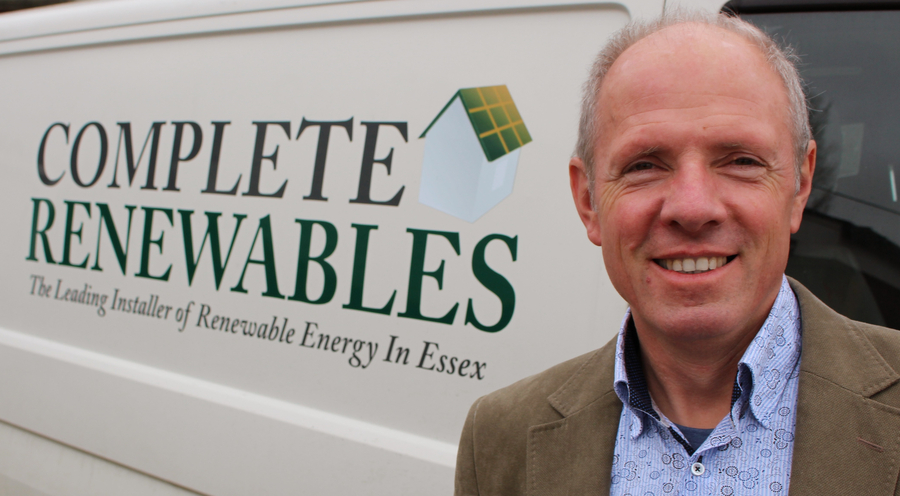An effective solar battery is the solution to what is arguably the biggest problem facing the solar industry today: intermittency. But up until relatively recently, the technology has always lagged behind the theory.
Today’s solar batteries can save homeowners with solar panels money by saving electricity generated in the sunniest part of the day for use later on at night. Car makers Tesla and Mercedes-Benz are not only working on batteries that can be used in the home, but also higher capacity versions for businesses and even power companies.
Solar batteries can also be used as a backup power supply for when there is a power cut. Current pilot projects have been supplying 500 homes in California with two days of power in the event of an outage.
Who are the contenders?
Last April, Elon Musk of Tesla announced a solar battery for the home. Their product, the Powerwall, can be mounted on the wall and store up to 10 kW hours of wind or solar power. The Powerwall starts at £1,980, but can jump to £3,200 once installation and extras are accounted for.
In London, a practically unknown team called Powervault are working on their own design that they hope will contend with Tesla. The powervault is a 150kg box that takes energy that is generated by the solar panels and transforms it into energy that can be stored in the batteries and used later as needed. It can store between 2 to 4 kWh of electricity and is priced from £2,000 to £2,800 per unit. Typically it can store energy only for 24 hours. Powervault estimates homeowners can save 15% of their energy bills – though that would depend on energy usage and the type and number of solar panels installed. The Powervault team argue that it is a product for the British market.
Mercedes-Benz has also moved in on the action by producing a box that can store 2.5 kWh or energy. Up to eight packs can be combined to hold 20 kWh. The company has outsourced production of the lithium-ion batteries to a subsidiary called Accumotive.
Ecotricity are working on a product too. Their “black box” is expected to see a 2016 launch.
Who is the smart money on?
Tesla are undoubtedly off to an early lead, with units already sold out until the middle of 2016 and Deutsche bank estimating that Tesla are in for as much as US$4.5 billion. That’s a feat that the others will do well to match – registration is now open on the Mercedes-Benz website, though only in Germany initially. Both companies are expected to begin shipping in September.
The other advantage that Tesla will have is cheaper mass production thanks to completion of the gigafactory. As well as Tesla, Musk also owns SolarCity, the which has installed solar panels in 39% of the residential U.S. solar market. Musk’s plan is to have every SolarCity panel come with a battery within 5 to 10 years time.
But despite Tesla’s early successes counting as a victory in many people’s eyes, two clear problems still remain: price and availability. In some ways Tesla being sold out until 2016 is just as much a reminder of the obstacles faced, as it is something that the company can be proud of.
Deutsche bank estimates that solar batteries will take another five years to see wide scale adoption, due to the falling price of lithium batteries. Nancy Pfund, the founder and managing partner of DBL Investor, argues that solar batteries represent “a revolution” that “isn’t that far away.” She likens these first solar batteries to early cell phones, reminding a panel at the Washington Post how far technology can progress in a short space of time.
The views and opinions expressed in this article are the author’s own, and do not necessarily reflect those held by pv magazine.
This content is protected by copyright and may not be reused. If you want to cooperate with us and would like to reuse some of our content, please contact: editors@pv-magazine.com.








1 comment
By submitting this form you agree to pv magazine using your data for the purposes of publishing your comment.
Your personal data will only be disclosed or otherwise transmitted to third parties for the purposes of spam filtering or if this is necessary for technical maintenance of the website. Any other transfer to third parties will not take place unless this is justified on the basis of applicable data protection regulations or if pv magazine is legally obliged to do so.
You may revoke this consent at any time with effect for the future, in which case your personal data will be deleted immediately. Otherwise, your data will be deleted if pv magazine has processed your request or the purpose of data storage is fulfilled.
Further information on data privacy can be found in our Data Protection Policy.